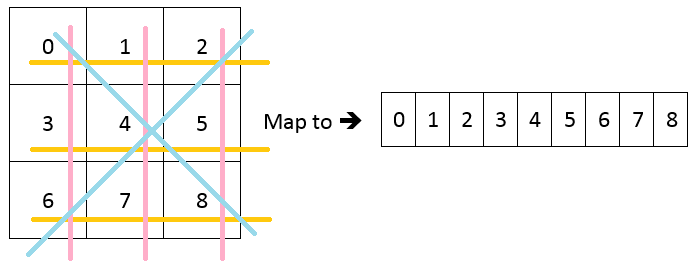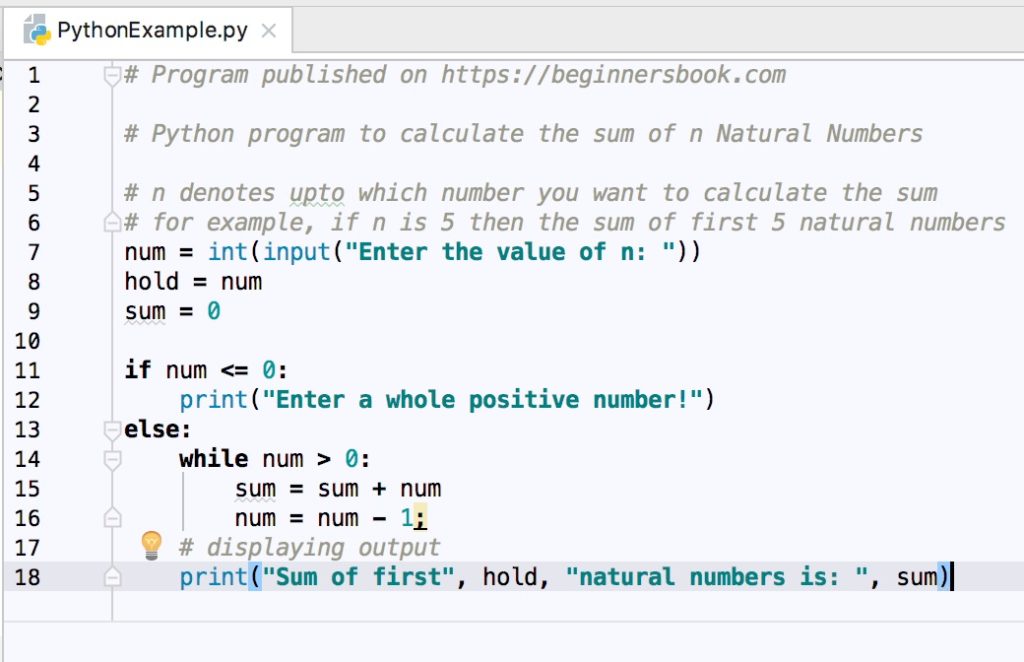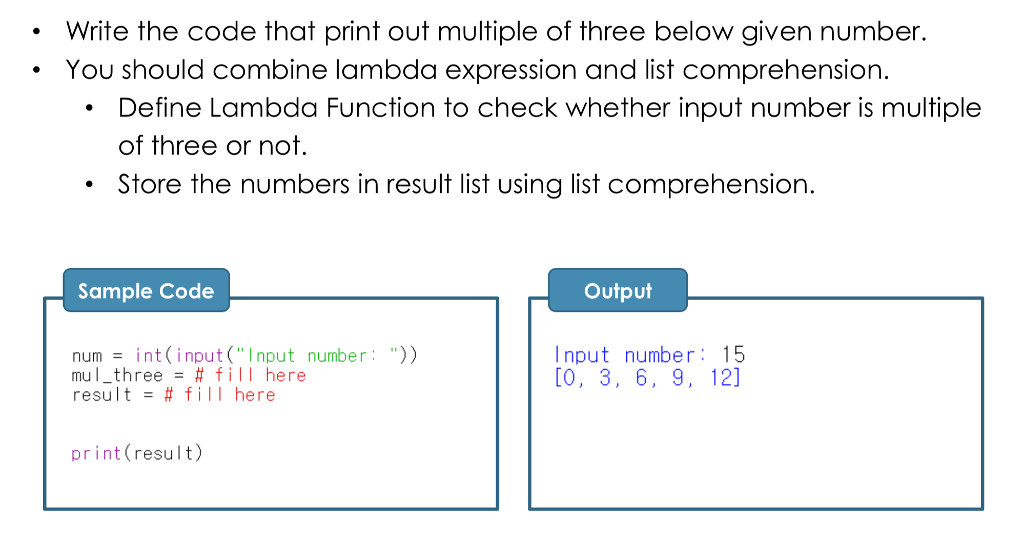In the above code, we create a class PermutationExample to get the permutation value. In the PermutationExample class, we create a static method fact() for calculating the factorial. In the permutation formula, we need to calculate the factorial of n and n-r.
In the main method, we create a list of numbers and add certain elements to it. We use the size() method to get the number of elements in the list. We set a constant value 3 to r, i.e., the number of items taken for the Permutation. After that, we use the permutation formula, i.e., fact/fact(n-r) and store the result into the result variable. At last, we show the final result to the users.
Permutations means different orders by which elements can be arranged. The elements might be of a string, or a list, or any other data type. It is the rearrangement of items in different ways.
Python has different methods inside a package called itertools, which can help us achieve python permutations. To implement the permutations function in Python, first import the itertools package. This method accepts a list as input and returns an object list of tuples containing all permutations in list form. Within the Spyder 3 tool, create a new Python project first. Within the newly created project, import the "itertools" module at the start of the code.
After that, we have initialized an integer type list having only three elements in it. The more the elements, the more the number of permutations set. Then, we have used the itertools class object here to use the built-in method "permutations()". This method, such as "permutations()", has been applied to the list "L" to get permutations done for the specific list. Using another generator expression, we quickly compute the byte values for each digit in this string. The result, guess, is of the form returned by the itertools.permutations() function in the alphametics.solve() function.
The itertools.combinations() function returns an iterator containing all the possible combinations of the given sequence of the given length. This is like the itertools.permutations() function, except combinations don't include items that are duplicates of other items in a different order. The enumerate built-in function obviates the need to separately create cycles and indices. As with the previous case, the result of this function is a generator which requires looping through and printing the permutations. We'll start off with the iterable which is a list with three strings.
The permutations function takes in two parameters, the iterable and r which is the number of items from the list that we're interested in finding the combination of. If we have three items in the list, we generally want to find all possible combinations of those three items. For some permutation problems, it is inconvenient to use the Multiplication Principle because there are so many numbers to multiply. Fortunately, we can solve these problems using a formula.
Before we learn the formula, let's look at two common notations for permutations. If we have a set of n[/latex] objects and we want to choose r[/latex] objects from the set in order, we write P\left(n,r\right)[/latex]. Another way to write this is __[/latex], a notation commonly seen on computers and calculators. To calculate P\left(n,r\right)[/latex], we begin by finding n! [/latex], the number of ways to line up all n[/latex] objects.
We then divide by \left(n-r\right)! [/latex] to cancel out the \left(n-r\right)[/latex] items that we do not wish to line up. All you need to do to convert these into lists is call list () on the result. For instance, we can get all the possible permutations of a list while determining the total number of elements in each permutation. So, let's update the previous code.
After importing the "itertools" module, we have initialized the same integer type list. After that, we have initialized another variable, "r", that would be further used in the permutations() method as a parameter. It will define how many items or elements one set of permutations would be having in it. In fact, the itertools library has a function called permutations. We we pass in an iterable, in this case, a string, the function returns a list of all possible combinations.
The combinations where the predicate function returns TRUE will be removed from the result. The permutations() function takes a sequence and a number, which is the number of items you want in each smaller group. The function returns an iterator, which you can use in a for loop or any old place that iterates. Here I'll step through the iterator manually to show all the values. Given a list of several strings, the set() function will return a set of unique strings from the list. This makes sense if you think of it like a for loop.
Take the first item from the list, put it in the set. Fifth — wait, that's in the set already, so it only gets listed once, because Python sets don't allow duplicates. Seventh — again, a duplicate, so it only gets listed once. All the unique items in the original list, without any duplicates.
The original list doesn't even need to be sorted first. Now, 1234 will be printed as it is the first permutation of the number 1, 2, 3 and 4. Till now, we are able to implement the logic of recursion. But we still have to write the code where the swapping of the numbers will take place.
For example, after printing of 1234, we will get out of the permutation function to the permutation function. In the permutation function, the loop will increase the value of 'i' and will point to the element with index 3 in the array. Also, the variable 'start' is 2 and to continue further, we need to swap these two elements as we were doing above. You can also say that the element with the index 2 was the last fixed element. So, we need to swap it with the next element.
Hence, after the increment of 'i', there should be a swap function. Chain() method to concatenate multiple lists together. Chain() method accepts data of different iterables such as lists, string, tuples, etc and provides a linear sequence of elements out of them. This function works irrespective of the data type of the input data.
In this tutorial, you'll learn how to use Python to find all permutations of a string, including using itertools, recursion, and Python for loops. You will also learn how to find all combinations of a string when replacement of individual letters are allowed. Cross2() returns the product set of the elements of.x and .y. Cross3() takes an additional.z argument.
Cross() takes a list .l and returns the cartesian product of all its elements in a list, with one combination by element. Cross_df() is likecross() but returns a data frame, with one combination by row. The re module is Python's implementation of regular expressions. It has a nifty function called findall() which takes a regular expression pattern and a string, and finds all occurrences of the pattern within the string.
In this case, the pattern matches sequences of numbers. The findall() function returns a list of all the substrings that matched the pattern. There are some use cases or problem statements when we need to find all the possible orders in which elements can be arranged. So we use permutations from itertools. Some people get confused between combinations and python permutation, in permutations the order matters but in combinations, the order doesn't matter. We will learn how to print all combinations of three different numbers in this python programming lesson.
The application will accept three digits from the user / we give input as static and print out every possible combination of the three digits. Generates a random permutation of integers from random number stream s instead of the default global stream. To create a stream, use RandStream. Specify s followed by any of the argument combinations in previous syntaxes. Python provides a package to find permutations and combinations of the sequence.
These methods are present in an itertools package. The permutation is an arrangement of objects in a specific order. We all have heard and studied the permutation concept in mathematics, likewise, Python supports some built-in functions to generate permutations of a list. Python provides a standard library tool to generate permutations by importing itertools package to implement the permutations method in python.
We will also discuss the recursive method to generate all possible permutations of a list. In this post, you learned how to use Python to generate a list of all permutations of a string. You learned how to do this using the popular itertools library as well as using recursion.
You then learned how to use a Python for loop to generate a list of all combinations of a string when repetition is allowed. The following code is an in-place permutation of a given list, implemented as a generator. Since it only returns references to the list, the list should not be modified outside the generator. The solution is non-recursive, so uses low memory.
Work well also with multiple copies of elements in the input list. Extended application of the above program. Permutations are great for finding number of ways an array of integers can be sorted. Let's imagine that that we have a standard 52-card deck and we wish to find the number of permutations of four aces while shuffling the cards.
We may need to add a function to our code and to use another package and libraby. Check use_case_permutations.py for more info. Calling the list() function "exhausted" the iterator, i.e. you've already generated every item in the iterator to make the list. There's no "reset" button on an iterator; you can't just start over once you've exhausted it.
If you want to loop through it again , you need to call itertools.groupby() again to create a new iterator. The itertools.groupby() function takes a sequence and a key function, and returns an iterator that generates pairs. Each pair contains the result of key_function and another iterator containing all the items that shared that key result.
The permutations function actually creates a generator so we need to loop through it again to print out all the permutations of the list. One uses for itertools is to create a permutations() function that will return all possible combinations of items in a list. This module provides an inbuilt method permutations() that takes a list as an input and returns an object list of tuples that contain all permutations.
In the given example, we are finding the permutation of a list of three items. The arrays returned by randperm contain permutation of integers without repeating integer values. This behavior is sometimes referred to as sampling without replacement. If you require repeating values, use the randi function. The extended tools offer the same high performance as the underlying toolset.
The superior memory performance is kept by processing elements one at a time rather than bringing the whole iterable into memory all at once. Code volume is kept small by linking the tools together in a functional style which helps eliminate temporary variables. High speed is retained by preferring "vectorized" building blocks over the use of for-loops and generators which incur interpreter overhead. It differs from combinations, which select some set members where the order is disregarded. The below example takes an empty list to store all permutations of all possible length of a given list.
Extend() function is used to add items to the empty list one after the other. Iterating over the elements of the list using for loop, the itertools.permutations() function finds all the possible lengths. Let's see another simple method to get all the possible permutations of a list. Import the "itertools" package first. Instead of initializing a list separately, we have directly passed a list to a permutations() method to get permutations.
The permutations have been converted into a list and then printed out in a single line. The source code for this illustration is appended below. -1 correspond to all possible permutations in lexicographic order.





























No comments:
Post a Comment
Note: Only a member of this blog may post a comment.